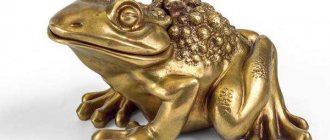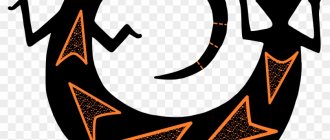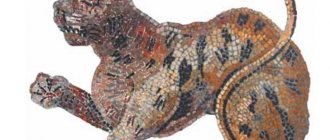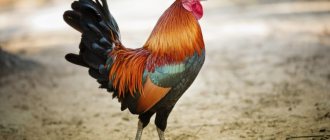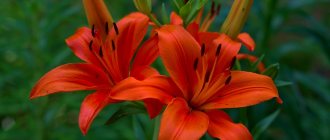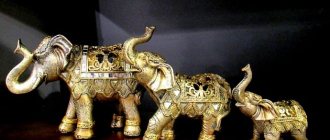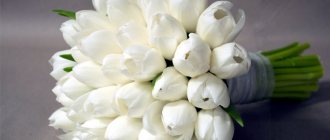The knot is perhaps one of the most ancient magical symbols, says the Tibetan Doctor Clinic in St. Petersburg . At the same time, its essence is surprisingly dual: both tying a knot and the process of untying it have a special meaning. Moreover, the first is associated with capturing, attracting something, and the second with releasing, while the node itself is capable of preserving energy or an idea.
The Tibetan knot (Srivatsa Skt. Shrivatsa, Tib. Dpal be'u, other names - “knot of eternity”, “knot of infinity”, “knot of happiness”, Bur. - “ulzy”) is one of the eight auspicious symbols of Tibetan Buddhism. The infinity knot symbolizes the desire to understand the secrets of immortality, eternal youth and beauty.
The Tibetan endless knot represents the changing nature of time, the impermanence and interconnectedness of all things in nature, as well as the unity of wisdom and compassion. It is also a symbol of the interdependence of all phenomena and living beings in the Universe. It is only natural that the Infinity Knot becomes a symbol of love.
When are knots used and what do they mean?
The knots themselves contain an interesting, but at the same time simple, subtext. In Buddhism, tying a knot and untying it even becomes a certain ritual.
It is believed that by tying it, we launch the flywheel of karma and enclose energy in this knot. If the energy is positive, then it will lead to favorable consequences and contain a good wish. When tying, we seem to acquire, capture something.
When tying a knot with your own hands, you can read mantras - this will enhance the effect and become an excellent amulet.
The node preserves the idea, the plan. The opposite action occurs when untying - we release energy, get rid of unnecessary things, let go of the past.
Knots are often tied on rosaries. 108 beads are strung on a thread or string. Above them there should be the main, 109th bead, which symbolizes the head of Buddha. Then you need to make the knot correctly so that the beads close together.
Perhaps most often in Buddhism, knots are found in the list of eight noble symbols of the dharma:
- umbrella;
- vase;
- sink;
- goldfish;
- victory banner;
- lotus bud;
- eight-spoke wheel;
- infinity knot.
Choosing a tattoo for girls
When choosing a stylish tattoo to apply to different areas of the body, girls strive to convey to others as much information as possible, the meaning that was embedded in the image. Often women do not miss the opportunity to show off a tattoo, so they are ready to get it in the most visible place. Modern young ladies choose the following pictures:
- Opened rose buds. This tattoo carries the purest and deepest meaning: the girl shows that she is always young, pure in her thoughts, and waiting for sincere love. Some ladies want to attract success and fame into their lives, to revive hidden talents and skills. The rose is often printed on the back, tailbone, hips: it can be black and white or red.
- Star. One of the characteristic signs of attracting happiness and good luck into life. Having made such a tattoo, you can soon expect good luck and prosperity in all areas: work, personal and even intimate. It is appropriate to apply this design to small areas of the body, for example, on the back of the neck or wrist.
- Butterfly. According to generally accepted symbolism, it is this insect that can attract success. This miniature and elegant tattoo is chosen more often by girls than by boys. The color of the insect also has meaning: red symbolizes life and old age, perseverance; green - joy, hope and fertility, and blue - truth, fidelity.
Among the popular women's drawings, it is worth highlighting the image of a snake - a symbol of wisdom, intuition - without it it is impossible to attract good luck. Also, young girls often paint a picture of a graceful cat: she is by nature a predator and a breadwinner, who will achieve success for her owner on her own. The image of a tiger on the body of beautiful young ladies speaks of determination and slight aggression, which is so necessary in achieving goals.
Endless knot
What is he like? It has several names:
- eternity knot;
- happiness knot;
- endless knot;
- srivatsa - in Sanskrit;
- palbeu - in Tibetan;
- Ulzy - in Buryat.
It is found especially often in the Mahayana and Vajrayana. A very strong influence can be seen in Tibetan Buddhism, including on Mongolian soil.
This symbol is considered one of the oldest and most beneficial in Buddhism. It is a ribbon, thread, rope, cord or metal wire that forms a specific pattern, in some places tying the material into knots. It can also just be a drawing on paper.
Such weaving has no end, therefore, like its own nature, it personifies the endless, never-ending cycle of life.
History of the longevity knot talisman
The ancient Scandinavians believed that the most powerful feeling in a person’s life is love. The Celtic knot is the unity of hearts that love each other. Such talismans helped to find happiness in your personal life, to find a person with whom you could build a harmonious union.
The ancient Celts believed that the physical and spiritual principles unite in the heart of people, and this is where love is born. Such knots are not suitable for people who do not experience any feelings in their souls. Such amulets will help develop the feelings that one person experiences for another. They are the personification of the continuity and infinity of love.
This is the only way a person can overcome certain obstacles and achieve happiness.
The life knot was also associated with life. A person must overcome certain obstacles and obstacles throughout his life, only in this way can he find happiness. The knot is a powerful protector and attracts good luck into the life of its owner.
What does it symbolize
The infinity knot is a very ambiguous symbol that hides many meanings. There are several interpretations of its meaning:
- eternity;
- an ongoing cycle of rebirth;
- knowledge of the immortal essence, long youth;
- the profound wisdom of the Buddha;
- interdependence, impermanence of things and events in the Universe;
- the mutual connection of mercy and wisdom;
- variability of the passage of time;
- getting rid of ignorance;
- endless possibilities of the mind;
- absolute beauty, joy, love.
Vajrayana views knots as representing the consequences of karma.
What do men choose more often: the meaning of tattoos
For the male population of the planet, a tattoo is hardly a way to decorate oneself. According to statistics, most men make drawings to demonstrate their life principles and foundations. Guys love to make loud inscriptions, images of formidable animals, symbols and signs that carry a certain context.
Of the most popular tattoo options that are in demand among men, today they choose the following:
- lions - pride, determination of this person will allow him to be lucky throughout his life;
- dragons - power, a powerful force attracts wealth into a man’s destiny;
- snakes - symbolize wisdom, abundance and prosperity, which already speaks of financial well-being;
- crosses - loyalty to one’s family, perhaps devotion to religion: faith brings good luck to many people;
- heart - such a picture brings love and good luck in one bottle.
Men tend to get tattoos on places that are visible in the summer: elbows, shoulder areas, and the back of the head. The younger generation of guys get tattoos on their legs, because in the summer they wear shorts or breeches. Recently, the application of color drawings has acquired enormous proportions and young people “fill all their arms and legs” with pictures.
Tattoo on hand
A good place to place a large picture is on the back. This is where you can place a huge symbol of good luck, such as a star made in two colors. There is a rule that talismans should not be displayed in public, otherwise they will not work. There is no need to worry that no one will notice the image on the back; but it will bring good luck in life.
How did it come about
There are several legends about the appearance of a knot in the teachings of Buddhism.
The first legend states that it was presented to Shakyamuni Buddha along with the other seven dharma jewels. Another says that it was given to Buddha as a sign of veneration and respect by Ganesha, the elephant-headed deity of the Hindu pantheon.
Indian deity Ganesha
The third story says that the symbol was borrowed from the ancient Egyptians and transformed into two snakes that intertwine and bite each other's tails. This depicts the kundalini energy passing through different channels - right and left.
The knot as a magical symbol among different peoples
Each people, depending on their occult preferences, interpreted the meaning of the nodes differently:
- In Ancient Egypt, priests were of great importance in people's lives, who considered the knot to be the concentration of the power of magic. With their help, the priests first captured and then held back spirits and other natural forces. Based on the knots, they created complex multi-layered amulets to protect a person from the “evil eye” or diseases.
- The ancient Greek legend that has come down to us tells about the Gordian knot. The Macedonian did not spend a long time looking for a solution and unraveling the complex rope tied by King Gordius - but cut it. In those days, a cleverly tied thread was considered a symbol of science and its inaccessibility to everyone, because in order to unravel it, you need to look for different options that are not available to everyone. Macedonian, in this case, took advantage of his main rule - the right of the strong.
- The Slavic culture of the ancient Magi also considered knots to be magical protective talismans against the undead and the evil eye. This was especially true for girls - they wore a thin red belt with knots to prevent damage. Sometimes they put a fishing net on the bride, consisting of hundreds of knotted threads with a belt of forty knots, and a prayer was read over each of them. This attitude towards the tied threads was due to the belief that the witch and the sorcerer would not reach the person until they had dealt with all the ties.
How it is made
Nowadays, infinity knots are made and worn as a talisman or amulet. Moreover, they can be worn in the form of a bracelet, pendant or even a ring.
Today you can purchase ready-made accessories with Buddhist knots of various types, colors, designs and materials. It can be leather, suede, elastic plastic, thin metal or ordinary threads.
However, it is believed that the best option to “charge” the amulet with good energy is to tie it with your own hands. At the same time, you should think in a positive way and even make a wish for health, good luck in relationships, in family, work, study, business.
We will tell you how to properly weave a knot in one of the following articles.
What does a longevity amulet look like?
The infinity knot can be made of any material. It can be:
- Wire weaves;
- Weaves of cord, ribbon;
- An image drawn on paper;
- Knots made with your own hands or purchased from a ritual store;
- Jewelry.
Whatever the amulet, if its owner transforms his energy into it, it will work for positivity and well-being.
What brings
The amulet gives its owner many opportunities, qualities, and protects against failure. Thanks to him, a person can learn to set the right goals, move towards them and achieve them. Moreover, he is able to attract good luck.
It is believed that the knot also helps to manage time correctly and avoid wrong actions and rash actions. To achieve an even greater effect, some people combine knots with other lucky symbols.
The only thing you need to remember is that the knots of eternity are closely related to the laws of karma. If the wearer of the amulet commits bad actions, the nodes will immediately return the corresponding consequences to him and restore justice.
And, of course, the most important thing to do for the knot to work as a talisman is to sincerely believe in its power and bright future.
Infinity knot in feng shui
Feng Shui is the philosophy of changing the space around you. The knot has always been used here as a symbol that helps to find good luck, achieve prosperity and success. It is often used in ornaments, embroidery, carvings and interior design. Combined into a single composition with other symbols or amulets, it can increase its effect many times over. Infinity attached to money talismans gives them an inexhaustible stream of financial profit. Tied to a love amulet - helps to enjoy great love. Health, creativity, self-knowledge - everything connected to the Tibetan knot increases indefinitely.
List of tattoos that bring good luck
Since ancient times, people have used mysterious images to protect themselves and their homes. They independently depicted them on the surface, embroidered clothes with them, and also made drawings on the body. The tradition of amulets has reached our time; today they are used as tattoos.
There are the most popular versions of drawings that bring good luck to a person. If you get a tattoo with such a picture, you won’t have to wait long for prosperity:
- Acorn. In forest mythology it is said that this talisman brought luck to the nymphs who lived in the lap of nature. He helped them hide from enemies and find happiness. You can fill the acorn pattern on small areas of the body - wrists, neck.
- Bee. This insect not only brings financial improvement, but fills all areas of a person’s life with luck. A hardworking bee will help you realize yourself in every chosen field, from career to relationships.
- Cat. Cat themes are popular today in many areas of creativity. One of the reasons for this “invasion” of cats is their ability to bring luck to a person’s destiny. What kind of cat will be depicted on the body is up to the owner of the tattoo to decide.
- Ladybug. This picture attracts not only religious adherents, because the insect looks cute. It becomes the choice of many young ladies who get tattoos in the most incredible places. Ladybug can bring luck and good fortune.
- Clover leaf. This symbol is also popularly called the quatrefoil - it brings good luck, the sign is widespread in Ireland. The energy of this image will attract prosperity and positive emotions, which is exactly what a person seeking success needs.
All of the above options can be made in discreet black and white colors or be bright and colorful. Small tattoos are applied to the ankles, inner part of the arm, neck, and lower back. Large images look appropriate on the legs, back and chest.
